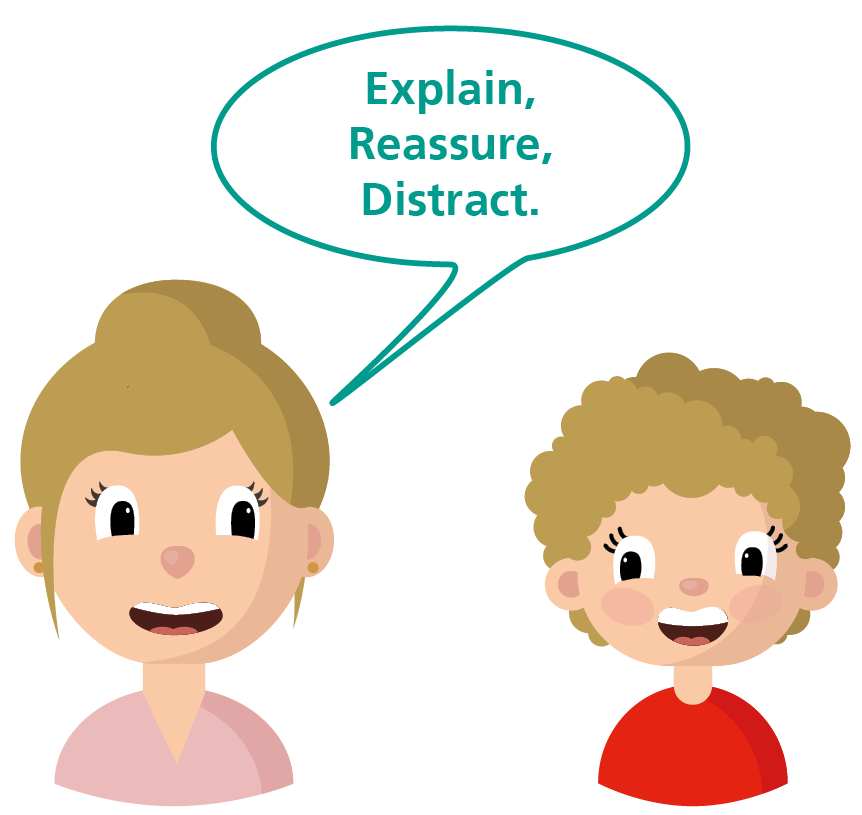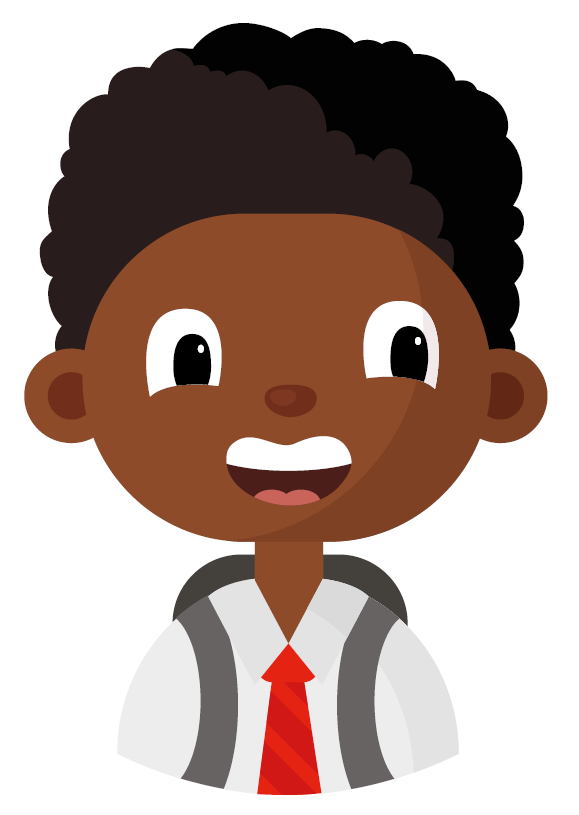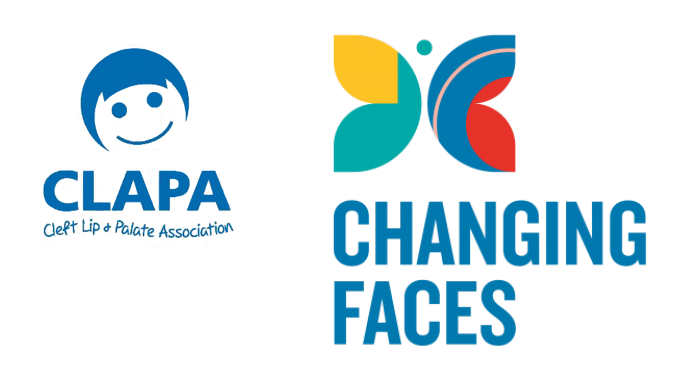Children and adults may have never met someone who has a cleft. Some may stare or have questions to ask. It is normal to look slightly longer if you see someone who has a scar or other visible difference. Someone staring or asking questions does not mean they think the difference is bad, most of the time they are just being curious!

Your child may not experience this until school age, but it is important that they are comfortable with coping with possible reactions or questions from their peers. They will learn this from a very young age by watching your reactions to others and by building confidence around talking openly about their cleft.
As your child gets older, talking about their differences openly can support them to feel accepted. Talking in a relaxed, confident, matter of fact way will show them that their cleft is not something to be ashamed of. If your child has done this with you, they will feel more confident when dealing with any comments or questions from others. The EXPLAIN, REASSURE, DISTRACT technique is a useful way of thinking about how to respond to other people.
The EXPLAIN, REASSURE, DISTRACT Technique
As your child reaches school age and meets new children, you may have concerns that they will experience comments about their appearance or speech that makes them uncomfortable.
The EXPLAIN, REASSURE, DISTRACT technique can be an easy way to manage questions and comments in three simple steps:
EXPLAIN – “I was born with a cleft lip, which means I had a gap in my lip. I had an operation when I was little to close the gap.”
REASSURE – “I don’t remember the operation and the scar doesn’t hurt.”
DISTRACT – “Let’s play tag, you’re it!” or “I like your pencil case, where’s it from?”
If you are using this approach to deal with comments and questions from the outset, it can be helpful as your child will naturally learn how to do this from watching you.

As children get older, particularly if they encounter comments or questions, it can be helpful to discuss what words to use. Writing examples of some EXPLANATION statements and REASSURING statements will help your child feel prepared and confident when responding to questions.
Your child might not like talking about their cleft and there will be times when they don’t want to talk about it at all. Thinking of some possible DISTRACT statements can be helpful to move a conversation along. These can take the spotlight off your child, reducing their embarrassment.
These statements can also be useful for developing your child’s friendship skills. Other people like to be asked about themselves, so a DISTRACT statement is a great way for your child to show an interest in someone else.
Using this technique can empower your child, giving them control over the information they share about their cleft. It also builds their confidence for the moments they have to deal with comments and questions.
Practice makes perfect! Building your child’s confidence
As your child gets older, you can support them to independently use the EXPLAIN, REASSURE, DISTRACT technique by gradually building their confidence.
After thinking of some example statements, if your child is hesitant to use the technique themselves, you can show them how to answer questions using it. Children learn how to do something by watching others do it first.
When introducing your child to using the technique themselves, allowing them to practice answering questions with people they are familiar and comfortable with (e.g. a trusted family member, family friend, or peer) can let them try out different statements and ways of presenting themselves in a safe space.
This gives an opportunity for your child to practice with no negative consequences, and time to think and plan for similar situations that might happen outside the home.
You and your child might come across situations when people direct their questions towards you, rather than your child. These are great moments to empower your child to answer for themselves if you think they are ready. You can give your child the option to answer by saying something like “That is an interesting question. Sam, would you like to answer their question about your scar?”.
Another way to provide your child opportunities to answer for themselves and use the EXPLAIN, REASSURE, DISTRACT technique is to encourage them to socialise. For example, by arranging play dates and joining after-school activities.
Finally, it may be helpful to share this technique with staff and teachers in addition to sharing the statements your child feels comfortable using. They can support your child in practicing this in response to comments and questions at school.
Starting a new school or club
When you child starts a new school or club, they will meet lots of new people and may deal with more questions and comments about their cleft. You can talk to them about these encounters, encourage them to use the EXPLAIN, REASSURE, DISTRACT technique and praise them when they do.

It is important to remember that most children with a cleft do very well at school. They make friends, have a positive experience and do not need any additional support.
All children will feel at least a little nervous about starting a new school or club. Even us adults get nervous about new experiences. We are just more practiced at managing this.
Encourage your child to smile and keep their head up, even when they are nervous, and reassure them that it will all become familiar soon.
Bullying and unpleasant comments
Just because a child has a cleft it does not mean they will experience bullying. Lots of people with a cleft never have a problem with bullying or teasing. However, if your child is experiencing unpleasant comments or behaviour from others that is upsetting them, then this is not okay.
It is important that your child learns to understand the difference between acceptable comments and unacceptable ones. If there are unacceptable comments or aggressive behaviours, please raise these with the school. It is the school’s responsibility to manage these and make sure that your child is safe. It is not your child’s responsibility to manage bullying. You can work together with the staff in your child’s school to manage this situation.
Having a routine, where you discuss the ups and downs of your child’s day, can provide a space for your child to talk about any difficulties they are experiencing. However, it may not be easy for parents to recognise at first that their child is being bullied, as children will often not want to tell anyone out of fear or even embarrassment.
Changes in the following areas might be signs that something is not quite right and a chat with your child and their teacher might be helpful:
- Emotional wellbeing – for example, they may become angrier, quieter or more upset than usual.
- Behaviour – for example, they may often try to avoid going to school (reporting lots of stomach aches or headaches), their school work might suffer or they may start getting into trouble more.
All schools have anti-bullying policies in place to help them deal with these situations in a supportive manner and help your child stay safe, secure and happy. If you need any additional advice, the CLAPA website has lots of information about how to deal with bullying. You can also contact a Clinical Psychologist in the Cleft Team for support. Website links and contact information are available on the next page.
Resources for support and information
You may also find it helpful to read our ‘Building your child’s confidence’ leaflet which you can request from the Cleft Team or access via the Leeds Children’s Hospital website.
If you have any questions or need further support after reading this leaflet, you can contact the Cleft Team and Cleft Psychologists:
Yorkshire Region Cleft Lip and Palate Service
F Floor, Martin Wing,
Leeds General Infirmary
Great George Street,
Leeds, LS1 3EX
These websites also have lots of helpful information and support:
https://www.changingfaces.org.uk/
